We have much more to do and your continued support is needed now more than ever.
Slowing Down Streams for Salmon
Beavers and beaver structures help juvenile coho salmon survive and thrive
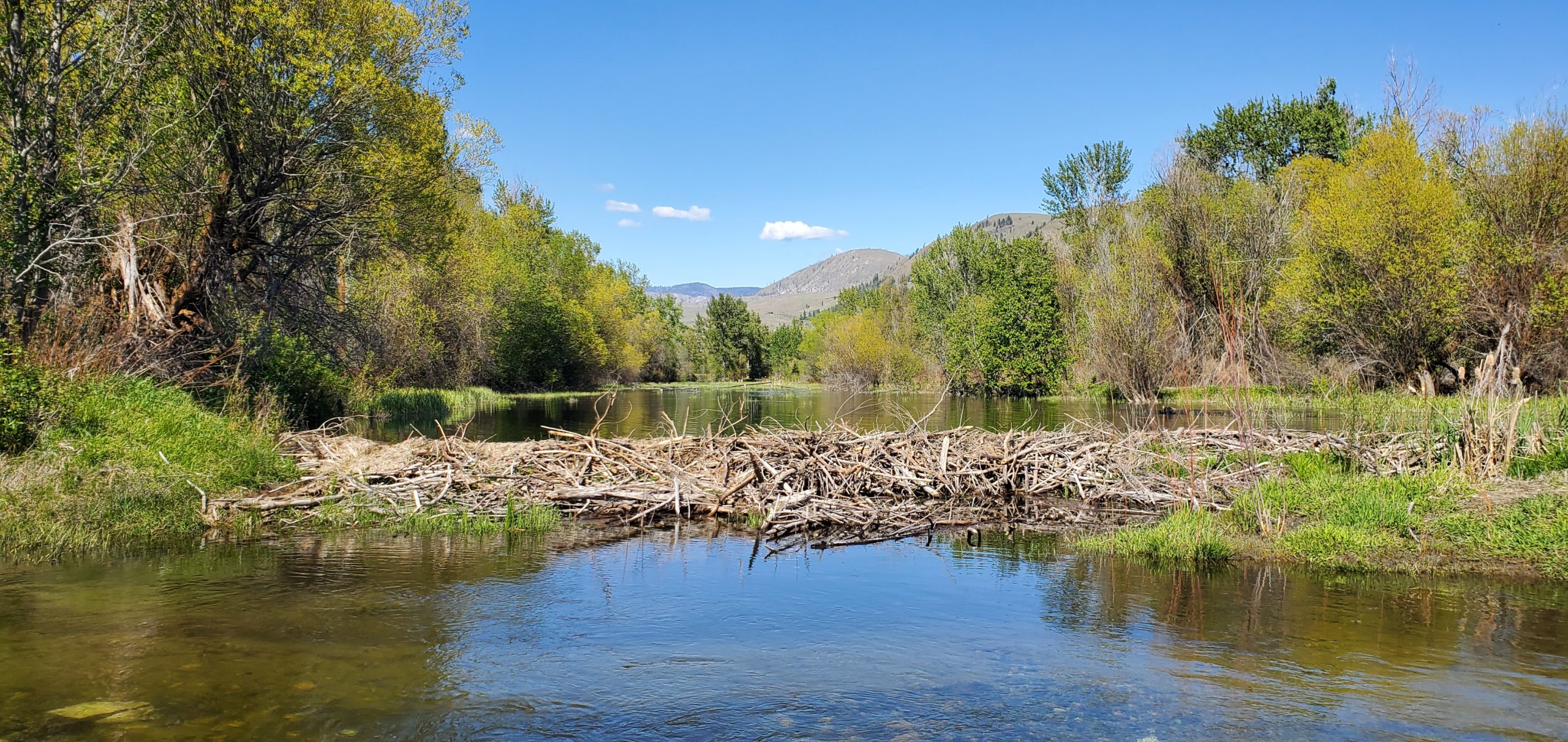
It’s late fall, and coho salmon are seesawing their strong bodies upstream — their flashy silver sides stained a dark maroon as the fish prepare to spawn.
With climate change turning much of the West warmer and drier, every drop of water matters for these coho, along with the other four species of Pacific Ocean salmon (chinook, pink, chum, and sockeye) that breed and hatch young in rivers and streams.
Beavers and beaver mimicry structures play a vital role in slowing down water so it stays in streams longer, which gives at-risk wild salmon a better shot at survival. Beavers gnaw down trees and shrubs to build natural dams. The ponds, sloughs, and side channels created by these dams provide better habitat for wildlife and more reliable water for landowners: they spread water across the floodplain, which allows more plants to grow, provides resilience during wildfires, and stores more water underground where it seeps out slowly during the summer.
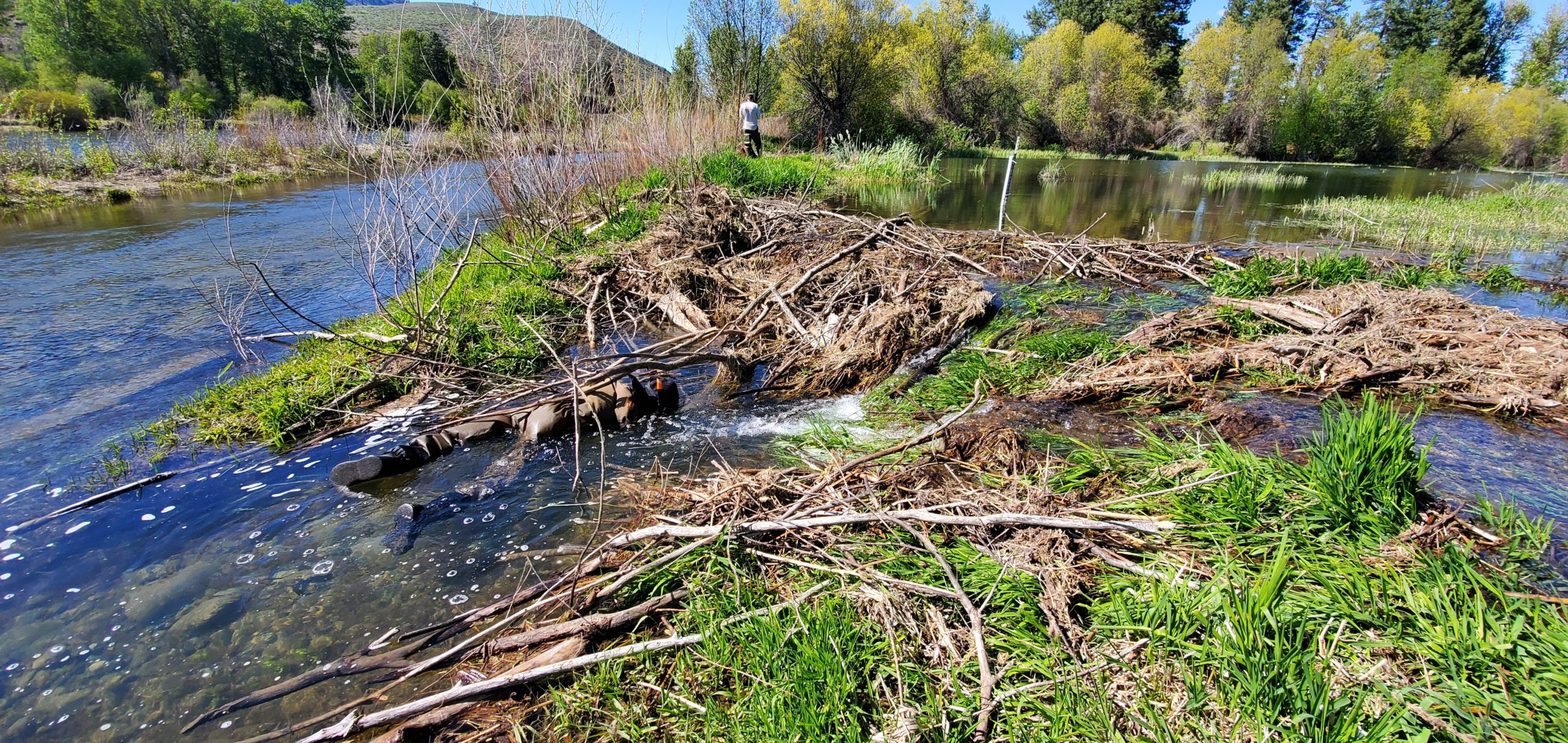
Coho in particular rely on the ponds or side channels created by beaver dams. Unlike pink and chum salmon that migrate back to the ocean soon after they hatch, coho spend the first half of their lives in fresh water. The juveniles need deeper, slower water to hide from predators and find food. In the winter, these spots often provide reliable ice-free habitat. In late summer, they offer fish refuge as other creeks dry or warm up. And during high flows in the spring, slow water offers fish a respite from raging currents.
“Where beaver ponds really shine for salmon is providing hydraulic refugia and helping moderate water temperature year-round,” says Alexa Whipple of the Methow Beaver Project (MBP), a non-profit that provides solutions to support coexistence with beavers to benefit people and wildlife.
Groups like the MBP and the Scott River Watershed Council (SRWC) are harnessing the power of beavers to boost salmon habitat from Idaho to Washington to California.
Creating slow water in the Scott River
While stocks of coho are faring well in the northern part of their range, the coho population along the central California coast is endangered. One of the limiting factors for these salmon is a lack of slow water habitat when they’re young.
“Unfortunately, the drought has really impacted our stream flows,” says Charnna Gilmore, Executive Director of the SRWC. “In areas that would typically have thousands of juveniles, flows have dropped way down or streams have dried out. It’s pretty heartbreaking.”
The Scott River watershed used to be a paradise for coho, a swampy marsh with meandering beaver-created sloughs that provided ample hidey-holes for native fish. But after humans modified the watershed — including trapping and killing thousands of its beavers — the Scott River and its tributaries now flow faster and straighter, leaving less habitat for salmon and other wildlife.

To slow water down, the SRWC built simple mud-and-stick beaver mimicry structures called beaver dam analogs (BDAs). The SRWC has installed over 20 BDAs since 2014, restoring in-stream and riparian habitat in the Scott River and four of its tributaries.
“We see that the fish behind our BDAs are in better health than fish that are trying to eke it out in the mainstem,” says Gilmore.
Measurements show that juvenile coho living in ponds behind the BDAs are longer and weigh more than coho from control sites. And it’s not hard to understand why: in normal water years when the Scott River dries up mid-August during normal water years, the only water in sight is behind BDAs in its tributary, Sugar Creek.
Making beaver dams better in the Methow River
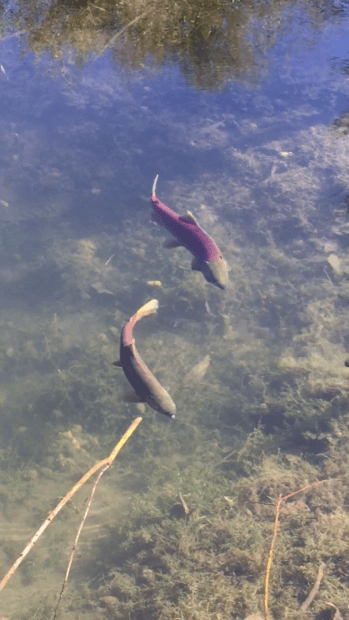
Salmon have coexisted with beavers for millennia and can usually navigate these natural dams. In the past, however, if a beaver dam became too tall or silted in for fish to pass through, there was enough resiliency within the population to withstand a year or two without spawning in that spot. Or, in some cases, native fish could simply swim to a nearby stream instead.
But with rapidly dwindling numbers and a lack of high-quality habitat, salmon no longer have the luxury of resiliency. Restoration professionals therefore have to be very discerning about where to employ beavers or beaver mimicry to ensure it’s a boon for salmon rather than a burden.
“The devil is in the details and those details really matter,” says Whipple of the Methow Beaver Project. “Where beavers can be tolerated and accommodated, the potential for benefiting salmon is huge. But beavers have been kept out of most systems for so long, it can be a big lift to do it in a way where they can coexist with humans and salmon.”
The MBP has relocated 427 beavers since 2008 to reduce conflicts with landowners, releasing the rodents in over 70 locations in the Methow and Okanogan watersheds where their work improves riparian habitat, fire resilience, water quality, and water storage. They’ve also helped over 150 landowners better tolerate beavers by offering coexistence solutions like flow devices that minimize property flooding.
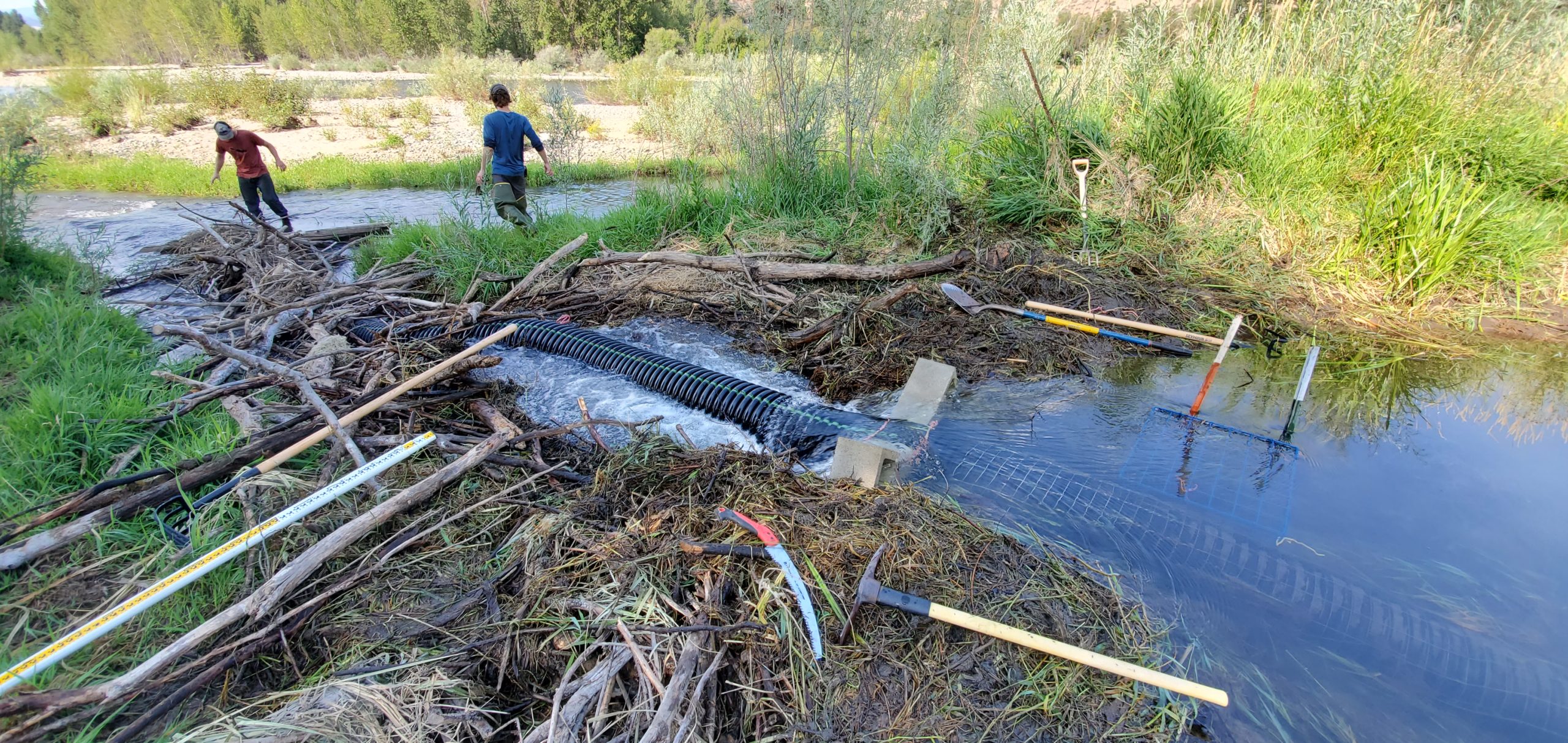
She points to a project on a side channel of the Methow River near Twisp, Washington as an example of a restoration solution that benefits both beavers and salmon. In a twist on typical beaver-related restoration where people seek to build up natural dams, the MBP lowered two existing beaver dams that had gotten too high to allow water — or fish — to pass.
River water now floods into the side channel for six to eight weeks each spring, providing vital habitat for juvenile salmon. When these salmon are ready to migrate back down river to the Pacific Ocean, they can simply swim over the top of the dam at high flows or use a fish passage flow device that the MBP installed in the dam.
In 2021, one year after these modifications, a snorkel survey found large numbers of juvenile coho, chinook, and steelhead feeding and taking refuge within the beaver-dammed side channel. In partnership with the Confederated Tribes of the Colville Reservation, MBP installed a salmon tracking microarray to better monitor the movement of tagged juveniles using this side channel. In addition, they installed flow control devices to ensure the dam doesn’t get too high again, which also protects nearby landowners from flooded driveways or fields.
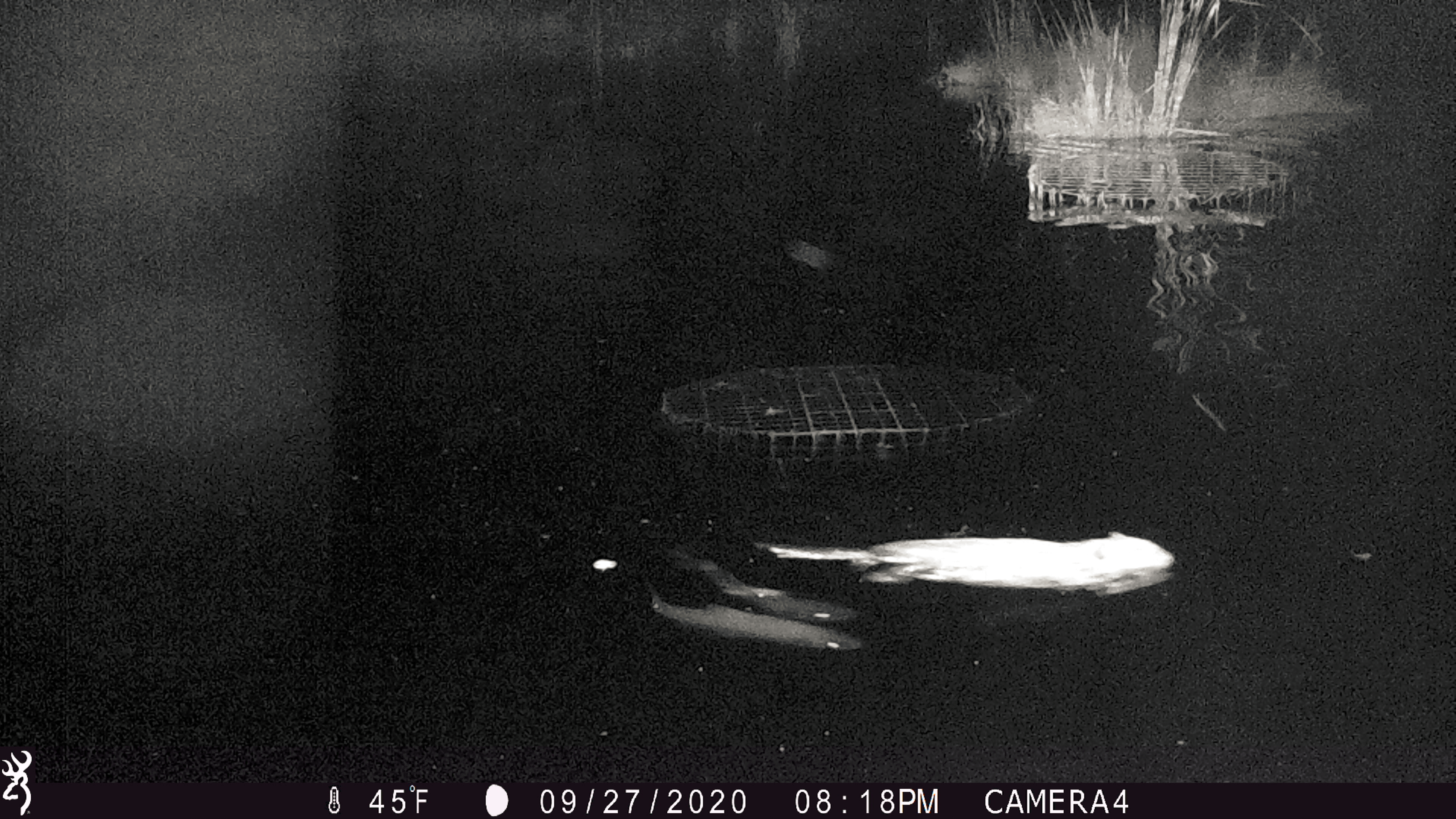
Remote cameras have shown otter, coyote, and black bears foraging near the beaver dam, along with herons, turkeys, and trumpeter swans. Plus, as a perfect punctuation mark on how these two iconic species are evolutionarily interdependent, the MBP captured a picture of two salmon swimming beside beavers in this restored side channel.
“It’s absolutely a case of successful coexistence,” says Whipple.
The National Wildlife Federation supports research and on-the-ground projects that build understanding about the effects of beaver-related restoration projects on fish and other species. In western Montana, for example, a collaborative research project examines the movement of native trout in the headwaters of Lolo Creek, tagging fish to track movement over and under natural dams and human-built beaver dam analogs. And the National Wildlife Federation helped create and is a continuing partner in the collaborative Montana Beaver Conflict Resolution Project.
Visit our Working with Beavers website to learn more about NWF’s work to restore habitat for beavers and other species.
Our work for wildlife — from beavers to native fish — is supported by the generosity of wildlife advocates like you. Please consider supporting our work today.
SUPPORT OUR WORK




















